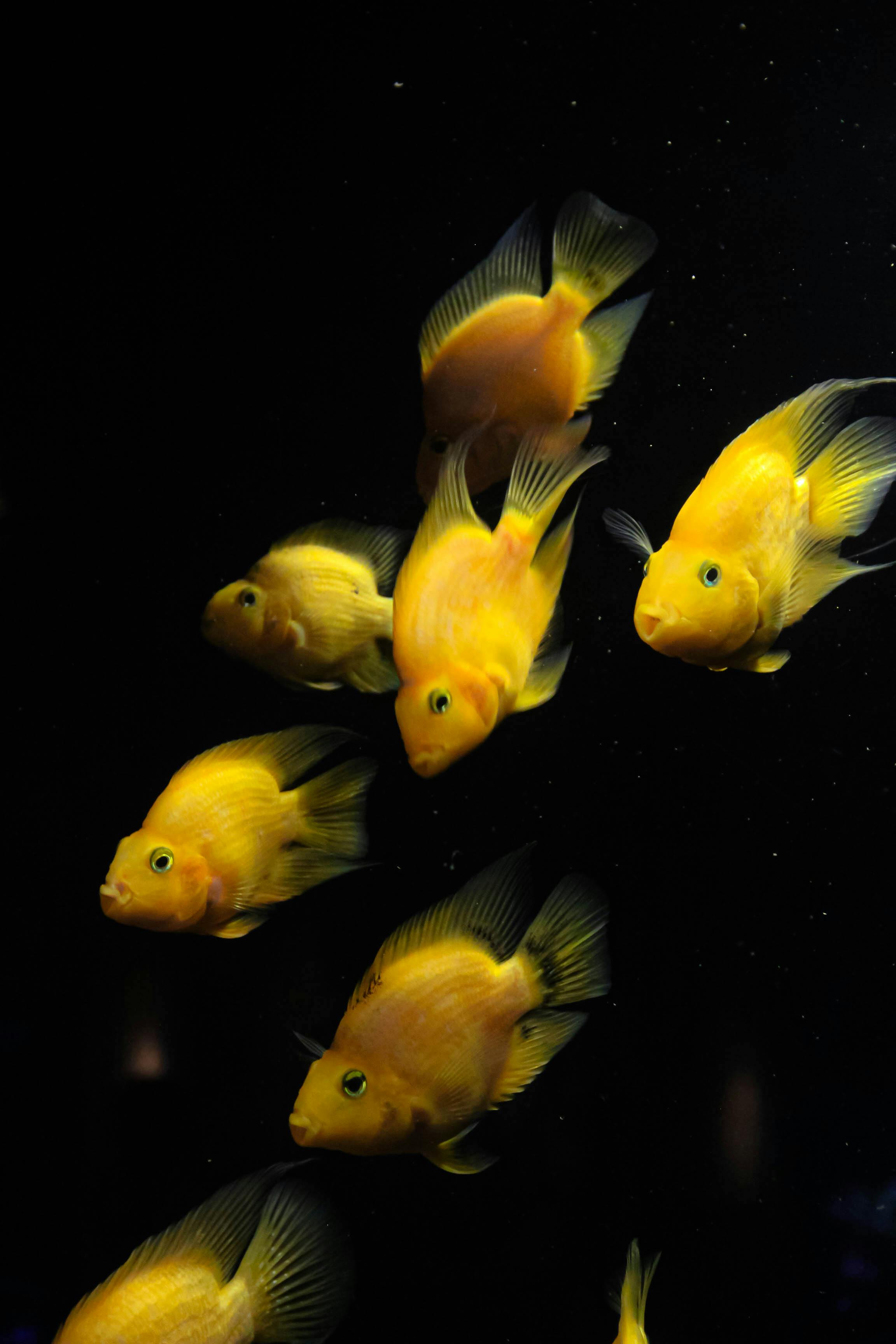Essential Components of a Betta Fish Starter Kit
Setting up a betta fish starter kit is essential for any fish owner looking to keep these vibrant and captivating creatures. Betta fish, characterized by their striking colors and unique personalities, require a properly equipped tank for optimal health and growth. In this section, we will delve into the fundamental components necessary to create a thriving habitat for your betta fish.
Choosing the Right Betta Fish Tank
The first step in setting up a betta fish aquarium is selecting the appropriate tank size. A suitable betta fish tank should ideally be five gallons or larger to ensure ample swimming space and stable water conditions. Remember, smaller tanks can lead to rapid fluctuations in water quality, which can adversely affect your fish's health. Additionally, consider the tank’s shape, as elongated tanks are more beneficial for active fish.
Essential Filters for Betta Fish Tanks
A filter is crucial for maintaining a clean environment in your betta fish habitat. Opt for a gentle filter, as betta fish can be stressed by strong water currents. A sponge filter is an excellent choice because it provides biological filtration while creating minimal water movement. Regularly clean and maintain your filter to ensure the best water conditions for your fish.
Ideal Heating and Lighting Conditions
Betta fish thrive in warmer water temperatures, ideally between 75°F and 80°F. Invest in a quality betta fish aquarium heater to maintain consistent temperature levels, which is vital for their overall health. Additionally, proper lighting plays a significant role in your betta's environment. Utilize LED lights or a simple lamp to replicate natural daylight cycles, which helps regulate their behavior and well-being.
Best Betta Fish Food Types
Nourishing your betta with the right food is fundamental in promoting their health and vibrant colors. Opt for high-quality betta fish food specifically formulated to meet their dietary needs. Look for products containing protein-rich flakes or pellets, and consider supplementing their diet with freeze-dried or live foods such as brine shrimp or bloodworms to enhance their nutrition.
Decorations and Environmental Enrichment
Creating a visually appealing and stimulating environment is vital for your betta fish's health. Incorporating betta fish decorations such as caves, plants, and floats provide hiding spots that simulate a natural habitat, which can significantly reduce stress. Ensure that any decorations are smooth and free from sharp edges to avoid injuries.
Setting Up the Betta Fish Tank: A Step-by-Step Guide
Having the right components is only part of ensuring a successful betta fish tank setup. Properly setting up your tank is crucial to creating a suitable environment from day one. Here’s a comprehensive guide on how to effectively set up your tank.
Preparing the Tank and Equipment
Start by rinsing your tank, substrate, and decorations with water. Avoid using soap or chemicals, as residues can harm your fish. Place the tank on a sturdy surface, and ensure it’s level to prevent structural issues. Add the substrate, ideally gravel or sand, to the bottom, ensuring it is 1-2 inches deep to help anchor plants.
Cycling the Tank for Healthy Water Conditions
The next critical step is cycling your tank, which establishes beneficial bacteria that break down harmful waste products in the water. It can take 4-6 weeks to fully cycle a tank. During this time, use a betta fish water test kit to monitor ammonia and nitrite levels, adjusting as necessary to maintain a safe environment.
Adding Water and Conditioners
Once the cycle is complete, it’s time to add water. Use a dechlorinator to treat tap water before pouring it into the tank. This step is vital in ensuring the safety of your betta fish. Fill the tank to the desired level and check that all equipment is functioning correctly before introducing your fish.
Acclimating Your Betta Fish
Before introducing your betta fish to their new home, acclimate them to prevent shock. Float the sealed bag containing your betta in the tank for about 15-20 minutes, allowing the temperature to equalize. Open the bag and gradually add small amounts of tank water into the bag over the next hour before releasing your fish.
Final Adjustments and Maintenance
After your betta fish has settled into their new environment, regularly monitor the water conditions and perform partial water changes weekly to maintain optimal quality. Adding a quality betta fish filter will significantly simplify ongoing maintenance. Keeping an eye on your fish's behavior will also provide insight into their health; any significant behavioral changes could indicate issues with their environment.

Understanding Betta Fish Behavior and Companions
To foster a healthy environment for your betta fish, understanding their behavior is crucial. Betta fish are territorial and can exhibit aggressive behavior towards other fish. Knowing their social dynamics will help you identify the best companions if you choose to create a betta fish community tank.
Behavioral Signs of a Healthy Betta Fish
Healthy betta fish display active behaviors such as swimming around their tank, showing curiosity toward their surroundings, and interacting with their environment. Other positive signs include vibrant colors and regular eating habits. Behavioral changes, including lethargy or hiding, may indicate underlying health issues.
Betta Fish and Companionship Options
When considering betta fish companions, select non-aggressive species that complement your betta’s nature. Suitable tank mates can include snails, certain shrimp species, or peaceful fish such as rasboras. Avoid keeping multiple male bettas together, as they are prone to fighting. Understanding fish compatibility is critical to creating a harmonious tank environment.
Common Betta Fish Behavioral Issues
If your betta exhibits behavioral problems, such as excessive hiding or aggressive tendencies, evaluate your tank conditions. Stress can stem from a poorly set-up tank, inappropriate tank mates, or an unbalanced environment. Addressing these issues promptly ensures the health and well-being of your betta.
Betta Fish Temperaments and Social Behavior
Betta fish are known for their unique temperaments. While males are generally more aggressive, females may display shoaling behavior, thriving in small groups. Understanding the social nature of your betta can lead to a more fulfilling experience as an owner and create a nurturing environment for your aquatic friend.
Maintaining Betta Fish Health: Essential Care Tips
Regular maintenance is vital for your betta fish's vibrant health and longevity. Adopting a proactive approach toward health care ensures your bettas live a long, healthy life in the right conditions.
Effective Feeding Schedule for Betta Fish
Creating a consistent betta fish feeding schedule is essential. Feed your betta small portions 1-2 times daily. Overfeeding can lead to health issues such as obesity and water quality problems. Monitor feeding habits and adjust as necessary to promote proper health.
Common Betta Fish Diseases and Prevention
Being aware of common betta fish diseases and their prevention is crucial. Regularly observe your fish for signs of illness, including discoloration, frayed fins, or unusual swimming patterns. Ensuring high water quality and a stable environment can prevent many health issues.
Temperature and Water Condition Monitoring
Maintaining appropriate betta fish temperature requirements is fundamental for their well-being. Regularly check the water temperature and conditions using your testing kit to ensure optimal levels. Sudden fluctuations can lead to stress or illness in fish, so consistency is key.
Decorating for Health and Enrichment
The role of tank decorations in enriching a betta's habitat is significant. Use live plants, silk plants, and caves to provide hiding spots and stimulate natural behaviors. Additionally, ensure all tank decorations are betta-safe to avoid injury.

Betta Fish Breeding: Tips for Success
Breeding bettas can be an exciting venture for hobbyists. If you decide to breed your betta fish, understanding their reproductive habits is essential. Begin by setting up a separate breeding tank and ensuring optimal conditions are in place.
Identifying Betta Fish Spawning Conditions
Betta fish require specific conditions for successful spawning. A slightly warmer tank, proper pH levels, and live plants facilitate their breeding process. Introduce a male and female betta in the breeding tank while closely monitoring their interaction.
Understanding Betta Fish Fry Care
Once the spawning process is successful, care for the fry is crucial. Ensure that fry are appropriately fed with powdered food until they grow larger. Maintain clean water conditions and provide hiding spots for developing fry to thrive.
Conclusion: Your Path to Successful Betta Fish Care
Setting up a betta fish starter kit is both a rewarding and exciting journey for fish enthusiasts. By understanding the fundamental components of a suitable betta fish aquarium and diligently maintaining your betta’s environment, you’ll enhance their quality of life. Be proactive in learning about betta health, nutrition, and behavior to ensure your new pet thrives for years to come.
